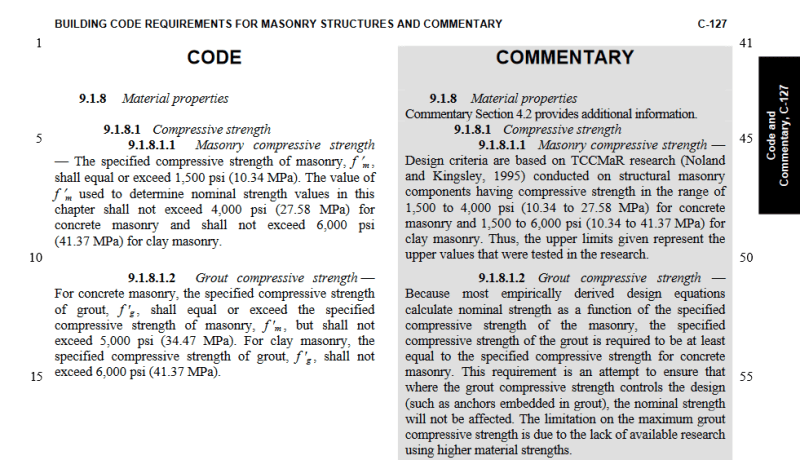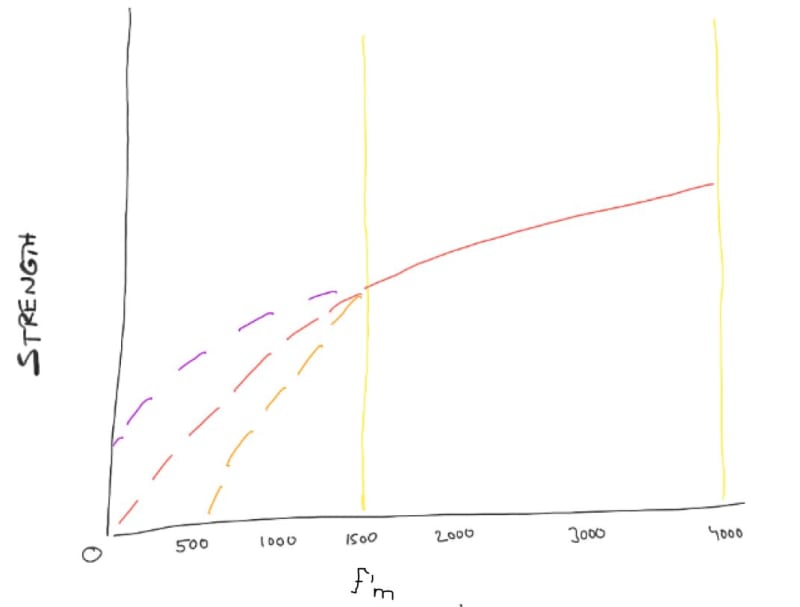Masonry question - is there a minimum f'm value below which the equations of ACI 530 cease to apply?
Specific situation: I'm looking at a new connection to an old-ish clay brick masonry wall (double wythe). At this point I don't have good data on the existing material, and I'm betting I never will, so my approach was to assume a connection geometry that should work, and check the minimum f'm needed just to gut check myself. Well...f'm(min)=5.72psi to preclude crushing. On the one hand, I can't break the brick between my thumb and forefinger so it's probably strong enough. But...that's just so low I find it hard to believe the equation is telling me the correct story based on the context.
I searched google and the ACI 530 commentary but came up empty handed. Anyone have any insight? Thanks.
Specific situation: I'm looking at a new connection to an old-ish clay brick masonry wall (double wythe). At this point I don't have good data on the existing material, and I'm betting I never will, so my approach was to assume a connection geometry that should work, and check the minimum f'm needed just to gut check myself. Well...f'm(min)=5.72psi to preclude crushing. On the one hand, I can't break the brick between my thumb and forefinger so it's probably strong enough. But...that's just so low I find it hard to believe the equation is telling me the correct story based on the context.
I searched google and the ACI 530 commentary but came up empty handed. Anyone have any insight? Thanks.


